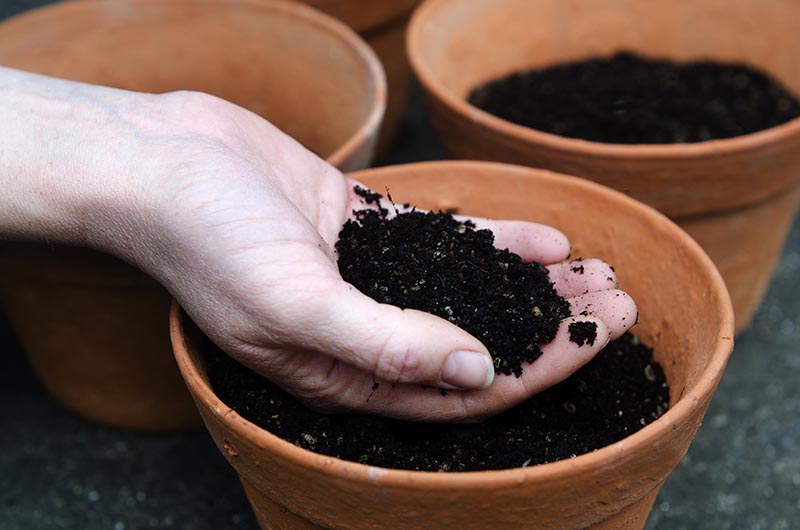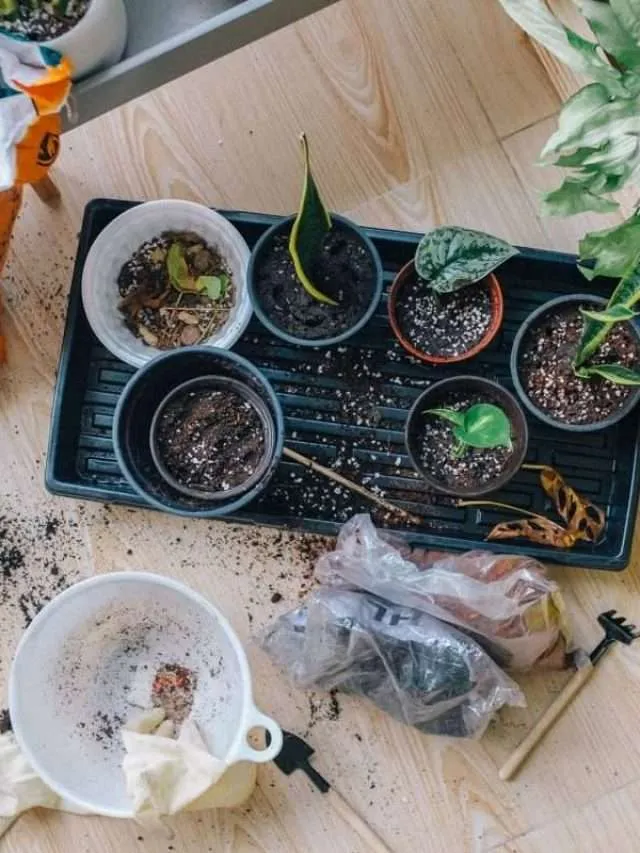“best soil for plants
- Indoor Plants
- How to Source Bulk Tropical Houseplants
- Dracaena Plant
- Outdoor Plants
- Easy Plants For Beginners
Table of Content
- 1 Unearthing Success: The Comprehensive Guide to Best Soil for Plants
- 1.1 The Fundamental Components of Soil: More Than Just Dirt
- 1.2 Key Properties of Ideal Soil: The Blueprint for Plant Health
- 1.3 Understanding Soil Types and Their Characteristics
- 1.4 Tailoring Soil for Specific Plant Needs: No One-Size-Fits-All
- 1.5 Improving and Maintaining Soil Health: A Lifelong Endeavor

Unearthing Success: The Comprehensive Guide to Best Soil for Plants
In the intricate dance of nature, where life unfurls from the smallest seed to the mightiest tree, the unsung hero often remains beneath our feet: soil. Far more than just inert dirt, soil is a vibrant, living ecosystem, the very foundation upon which all terrestrial plant life depends. For gardeners, farmers, and plant enthusiasts alike, understanding and optimizing this crucial medium is not merely a preference but a prerequisite for success. While the concept of "best soil" might seem singular, the truth is nuanced: there isn’t one universal best soil, but rather an optimal soil tailored to the specific needs of different plants and growing environments.
This comprehensive guide will delve into the science and art of crafting the ideal growing medium. We will explore the fundamental components of soil, its key properties, how different soil types impact plant growth, and most importantly, how to improve and maintain soil health to ensure your plants don’t just survive, but thrive.
The Fundamental Components of Soil: More Than Just Dirt
To appreciate what makes soil "good," we must first understand its basic building blocks. Healthy soil is a complex matrix composed of five primary elements:
-
Mineral Particles (Inorganic Matter): These are the weathered fragments of rocks, varying in size and composition. They are typically categorized into three main types:
- Sand: The largest particles (0.05 to 2 mm in diameter), sand contributes to good drainage and aeration due to the large pore spaces between particles. However, it has poor water retention and nutrient-holding capacity.
- Silt: Medium-sized particles (0.002 to 0.05 mm), silt feels smooth and floury. It offers better water and nutrient retention than sand but can compact easily.
- Clay: The smallest particles (less than 0.002 mm), clay particles are plate-like and have a high surface area. This gives clay excellent water and nutrient retention, but also poor drainage and aeration, often leading to compaction and waterlogging.


Organic Matter (Decomposed Plant and Animal Material): This is the lifeblood of healthy soil. Comprising decaying leaves, roots, animal waste, and microbial byproducts, organic matter improves almost every aspect of soil health. It acts like a sponge, enhancing water retention in sandy soils and improving drainage and aeration in clay soils. It also provides a slow-release source of essential nutrients and is a primary food source for beneficial soil organisms.
-
Water: Occupying the pore spaces between solid particles, water is indispensable for plant growth. It dissolves nutrients, making them available for root uptake, and is a vital component of photosynthesis. The ideal soil holds enough water for plants without becoming waterlogged.
-
Air (Gases): Also found in the pore spaces, air (primarily oxygen) is crucial for root respiration and the activity of beneficial soil microorganisms. Compacted or waterlogged soils lack sufficient air, suffocating roots and hindering microbial life.
-
Living Organisms (Soil Biota): This often-overlooked component is perhaps the most vital. From microscopic bacteria, fungi, and protozoa to larger nematodes, earthworms, and insects, these organisms drive nutrient cycling, decompose organic matter, create soil structure, and protect plants from diseases. A teaspoon of healthy soil can contain billions of microorganisms.
:max_bytes(150000):strip_icc()/healthy-soil-and-how-to-make-it-2539853-hero-fdf9b0280dca41cb8ae9614e6fc4a0b0.jpg)
Key Properties of Ideal Soil: The Blueprint for Plant Health
Beyond its components, the way these elements interact determines the soil’s overall quality and suitability for plant growth. Several key properties define ideal soil:
-
Soil Structure and Aggregation: This refers to how soil particles clump together to form aggregates. Good soil structure results in stable, porous aggregates, creating a crumbly texture known as "tilth." This allows for optimal water infiltration, aeration, and root penetration. Organic matter and the activity of soil organisms are crucial for building and maintaining good structure.
-
Drainage and Aeration: The ability of water to move through the soil (drainage) and air to circulate (aeration) are intrinsically linked. Ideal soil drains well enough to prevent waterlogging, yet retains sufficient moisture for plant needs. Good aeration ensures roots receive adequate oxygen.
-
Water Retention: While drainage is important, soil must also hold enough water to sustain plants between watering or rainfall. Organic matter significantly boosts water retention, especially in sandy soils.
-
Nutrient Holding Capacity (Cation Exchange Capacity – CEC): This is the soil’s ability to hold onto essential positively charged nutrient ions (cations) like calcium, magnesium, potassium, and ammonium, preventing them from leaching away. Clay particles and organic matter have a high CEC, making them excellent nutrient reservoirs.
-
pH Level: Soil pH measures its acidity or alkalinity on a scale of 0 to 14. A pH of 7 is neutral, below 7 is acidic, and above 7 is alkaline. Most plants prefer a slightly acidic to neutral pH (6.0 to 7.0), as this range optimizes the availability of most essential nutrients. Extreme pH levels can lock up nutrients, making them inaccessible to plants, even if present in the soil.
Understanding Soil Types and Their Characteristics
Based on the predominant mineral particle size, soils are broadly categorized:
- Sandy Soils: Light, gritty, and quick-draining. They warm up fast in spring but dry out quickly and have poor nutrient retention. Good for root crops like carrots and potatoes, but often require frequent watering and nutrient amendments.
- Clay Soils: Heavy, sticky when wet, and hard when dry. They hold water and nutrients well but drain slowly, are prone to compaction, and can be difficult to work. Good for plants that tolerate wet conditions, but often need significant amendment to improve drainage and aeration.
- Silty Soils: Smooth, floury texture, often fertile. They have better water retention than sand and better drainage than clay, but can compact easily. Generally good for most plants, but still benefit from organic matter.
- Loam Soils: Often considered the "holy grail" of garden soils, loam is a balanced mixture of sand, silt, and clay, along with a significant amount of organic matter. It possesses the best qualities of all three: good drainage, excellent water retention, optimal aeration, and high nutrient-holding capacity. Loam is crumbly, easy to work, and supports a wide variety of plants.
Tailoring Soil for Specific Plant Needs: No One-Size-Fits-All
While loam is generally ideal, different plants have evolved to thrive in specific soil conditions. Understanding these preferences is key to success:
-
General Garden Beds (Vegetables, Annuals, Perennials):
- Ideal: Well-drained loam rich in organic matter.
- Why: These plants typically have high nutrient demands and require consistent moisture and good aeration for healthy root development.
- Improvement: Incorporate generous amounts of compost, well-rotted manure, or other organic amendments annually.
-
Container Plants:
- Ideal: High-quality potting mix, not garden soil.
- Why: Container plants have limited root space and rely entirely on the potting mix for nutrients, water, and aeration. Garden soil compacts easily in pots, leading to poor drainage and aeration. Potting mixes are typically soilless, composed of peat moss, coir, perlite, vermiculite, and compost, designed for optimal drainage, aeration, and water retention in confined spaces.
- Improvement: Choose mixes specifically formulated for the plant type (e.g., general purpose, seed starting, tropical). Avoid cheap mixes that compact quickly.
-
Acid-Loving Plants (Rhododendrons, Azaleas, Blueberries, Camellias, Hydrangeas):
- Ideal: Acidic soil (pH 4.5-5.5) rich in organic matter.
- Why: These plants require acidic conditions to absorb essential micronutrients like iron. In alkaline soils, these nutrients become unavailable, leading to chlorosis (yellowing leaves).
- Improvement: Amend with elemental sulfur, peat moss, pine needles, or specific acidifying fertilizers. Avoid lime.
-
Succulents and Cacti:
- Ideal: Extremely well-draining, gritty soil.
- Why: Native to arid environments, these plants are highly susceptible to root rot in waterlogged conditions. Their roots need to dry out quickly between waterings.
- Improvement: Use a specialized cactus/succulent mix, or amend regular potting mix with large amounts of perlite, pumice, coarse sand, or grit (up to 50%).
-
Orchids (Epiphytic Types):
- Ideal: Bark-based, airy, fast-draining medium.
- Why: Most popular orchids (e.g., Phalaenopsis) are epiphytes, meaning they grow on trees in their native habitat, not in soil. Their roots need excellent air circulation and quick drainage.
- Improvement: Use orchid bark, sphagnum moss, charcoal, and perlite mixes. Never plant in regular potting soil.
-
Aquatic Plants:
- Ideal: Heavy, nutrient-rich clay loam or specialized aquatic plant soil.
- Why: These plants are designed to grow submerged, and the heavy soil helps anchor them and provides a slow release of nutrients without clouding the water.
- Improvement: Use specific aquatic plant soil or a mix of heavy topsoil with a small amount of sand or clay.
Improving and Maintaining Soil Health: A Lifelong Endeavor
Transforming average soil into a thriving ecosystem is a continuous process that yields immense rewards.
-
Soil Testing:
- Purpose: The first step to improvement is knowing what you have. A soil test (available through local extension offices or private labs) provides crucial information on pH, nutrient levels (macro and micro), and sometimes organic matter content and texture.
- Action: The test results will provide specific recommendations for amendments to balance pH and nutrient deficiencies.
-
Amending Soil:
- Compost & Well-Rotted Manure: The single most impactful amendment. Improves structure, drainage, water retention, nutrient content, and feeds soil microbes. Apply liberally (1-4 inches) annually and gently incorporate into the top few inches of soil.
- Perlite & Vermiculite: Lightweight, inert minerals that improve drainage and aeration. Perlite is volcanic glass, offering excellent drainage. Vermiculite is a mica mineral, holding

